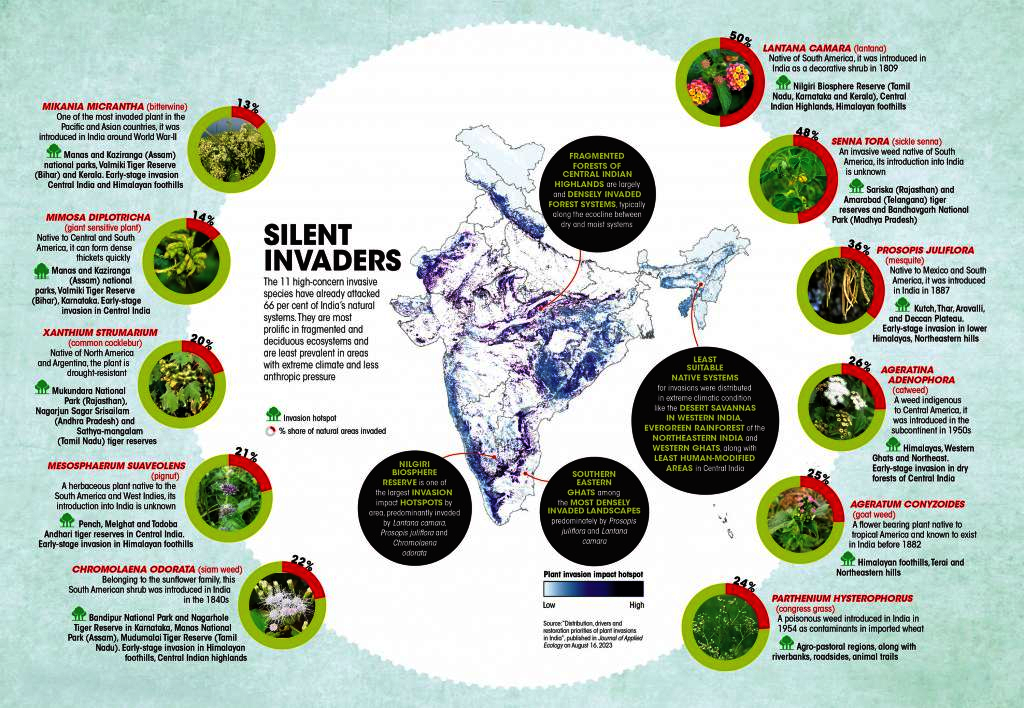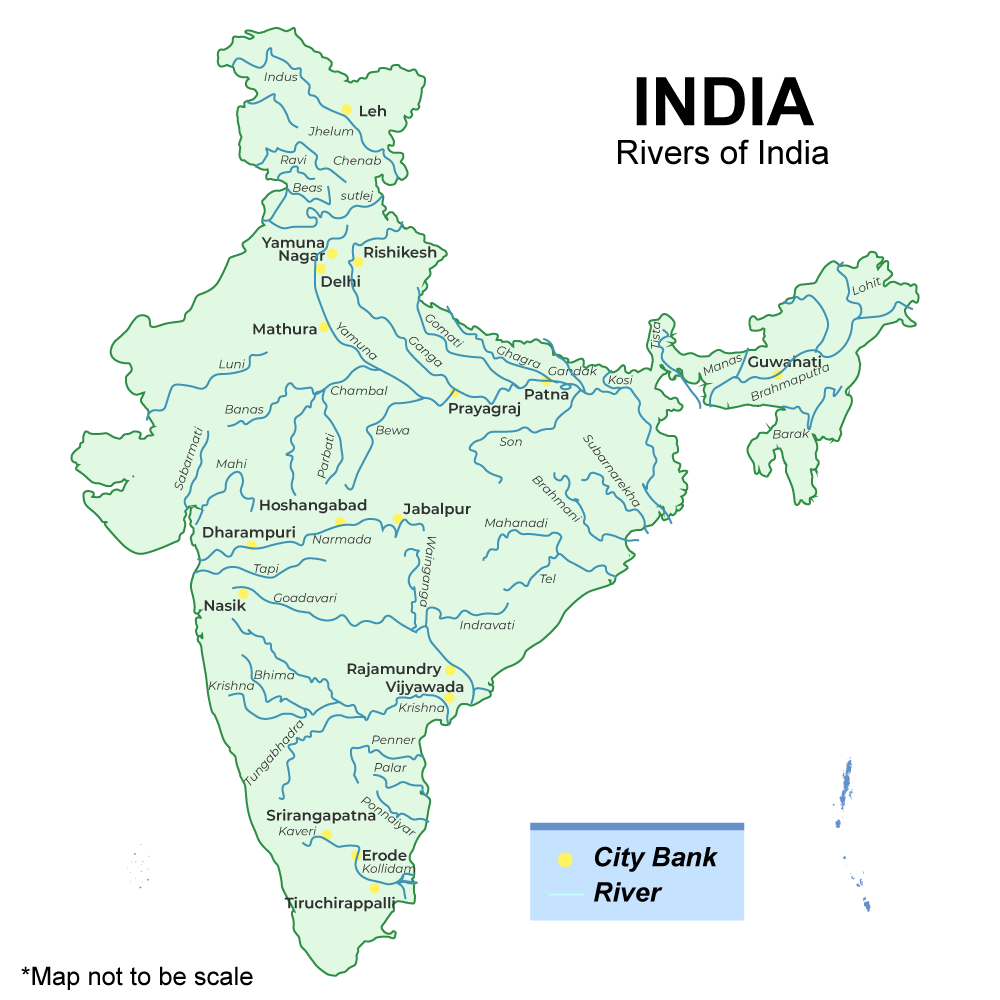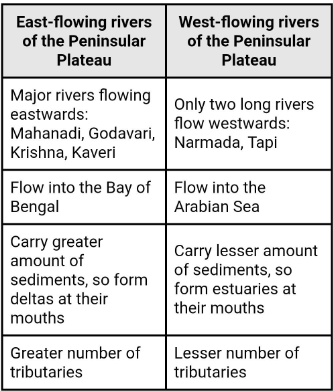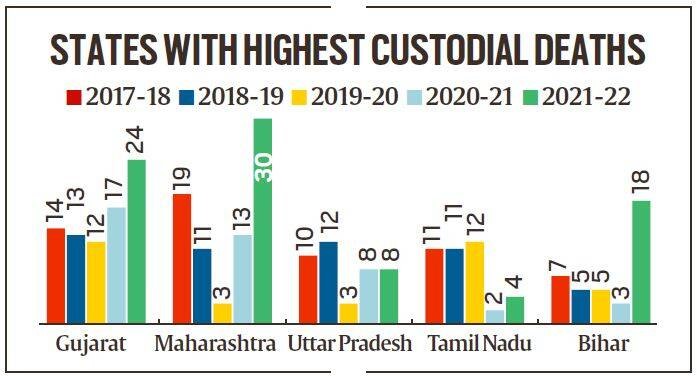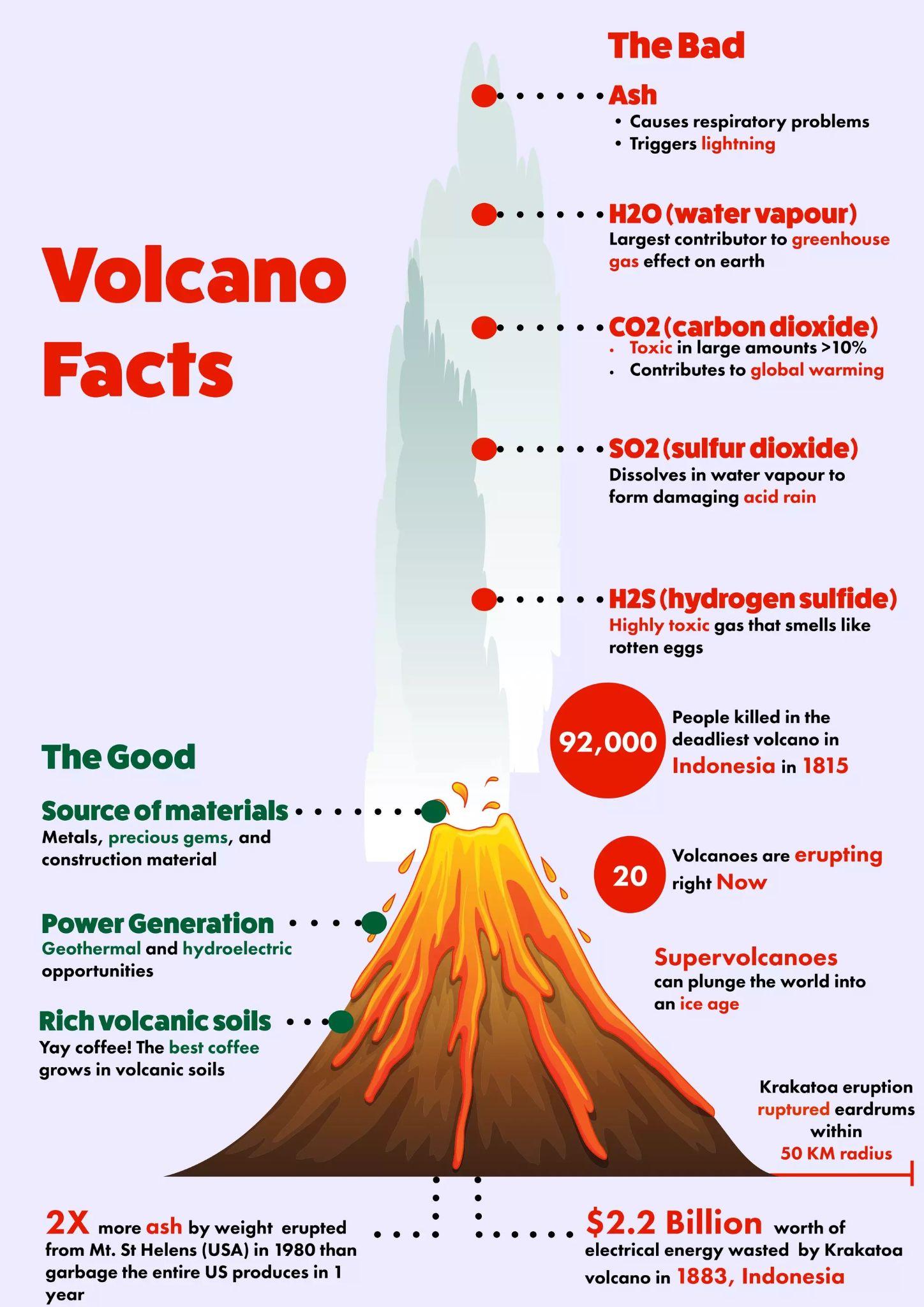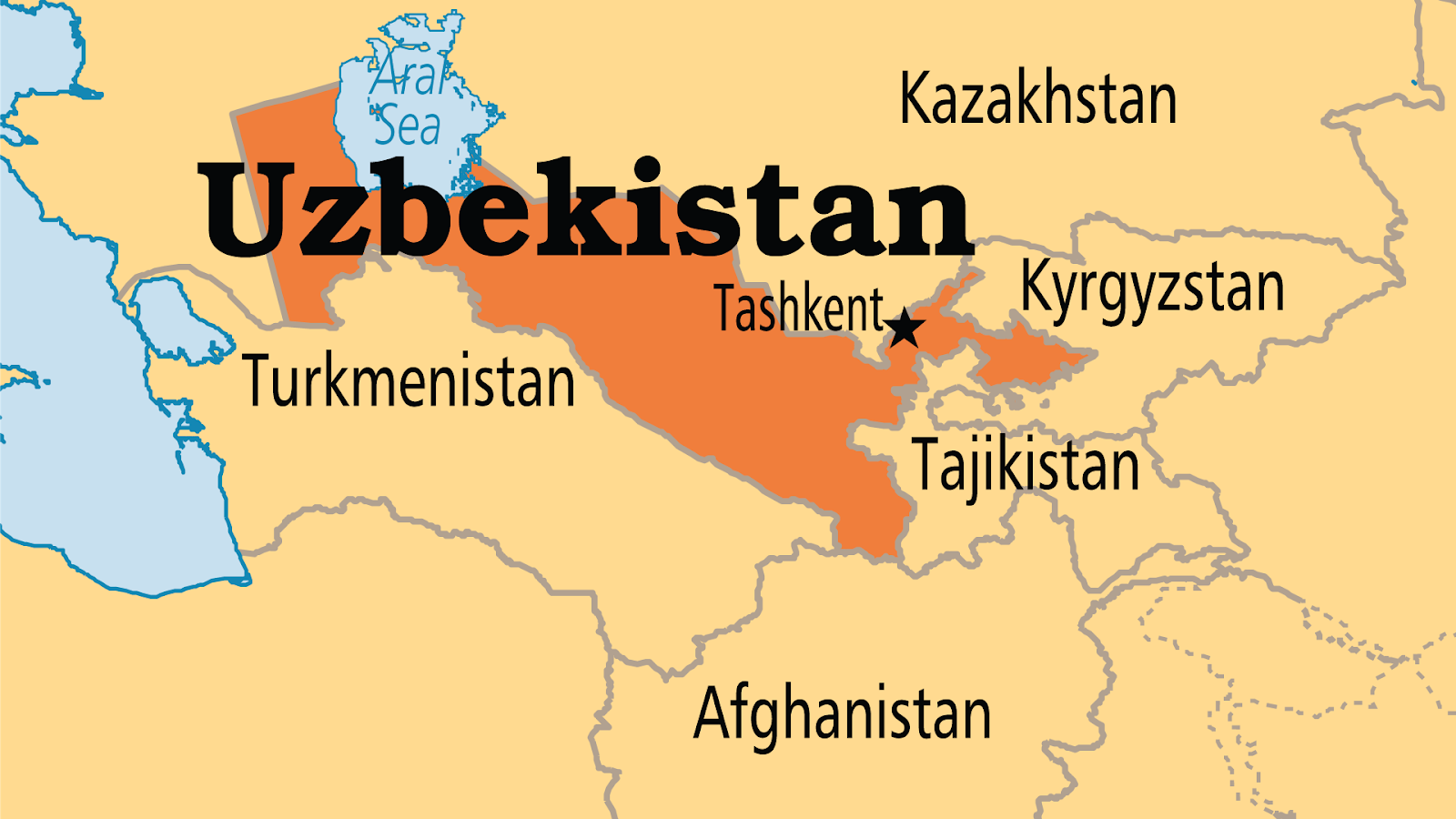Biodiversity & Environment
Threat of Invasive Alien Species
For Prelims: Invasive Alien Species, Andaman and Nicobar Islands, Convention on Biological Diversity (CBD), Wildlife Protection Act, 1972, IUCN Red List
For Mains: Factors Responsible for Rising Invasive Species and their Impacts, Environmental Pollution & Degradation, Conservation
Why in News?
In recent years, the issue of invasive alien species (IAS) has gained increasing attention, particularly in regions like the Andaman and Nicobar Islands, where the spread of species like the chital poses a significant threat to native flora and fauna.
What are Invasive Alien Species?
- About:
- Invasive alien species (IAS) are non-native organisms, including plants, animals, pathogens, and others, introduced outside their natural habitat, posing economic, environmental, and health risks.
- According to the Convention on Biological Diversity (CBD), IAS are characterised by their ability to "arrive, survive, and thrive," outcompeting native species for resources.
- In India, IAS are defined under the Wildlife Protection Act, 1972 (amended in 2022), as non-native species posing a threat to wildlife or habitats.
- They adversely affect biodiversity by causing the decline or elimination of native species through competition, predation, or transmission of pathogens.
- Invasive species disrupt local ecosystems and ecosystem functions, leading to ecological imbalance and loss of habitat.
- Invasive species negatively affect livelihoods, particularly in developing countries, where agriculture, forestry, and fisheries are essential sources of income.
- Invasive alien species are one of the five major direct drivers of biodiversity loss globally, alongside land and sea-use change, direct exploitation of organisms, climate change, and pollution.
- Examples:
- Species such as African catfish, Nile tilapia, red-bellied piranha, and alligator gar dominate the list of invasive wildlife in India.
- Red-eared Slider, a North American turtle, popular as a pet, has been introduced into Indian water bodies, outcompeting native species for food and habitat.
- Impact on Native Flora and Fauna:
- 1 in 10 species on the IUCN Red List are threatened by invasive alien species.
- Invasive species disrupt food chains and upset ecosystem balance, often dominating habitats devoid of natural competitors.
- Since the 17th century, IAS has contributed to nearly 40% of all known animal extinctions, highlighting their significant role in biodiversity loss.
- Case Study: In Keoladeo National Park, Rajasthan, African catfish prey on waterfowl and migratory birds, altering the park's ecological dynamics.
- Amplified Damage:
- Climate change, pollution, habitat loss, and human-induced disturbances exacerbate the damage caused by IAS, compounding their adverse effects on ecosystems and human well-being.
- Biological invasions also put human health, food security and livelihoods at risk, as highlighted in the United Nations Sustainable Development Goal 15.
- Climate change, pollution, habitat loss, and human-induced disturbances exacerbate the damage caused by IAS, compounding their adverse effects on ecosystems and human well-being.
- Economic Implications of IAS:
- The Intergovernmental Platform on Biodiversity and Ecosystem Services (IPBES) reported over 37,000 established alien species worldwide, with annual economic costs exceeding USD 423 billion.
- A study published in the Journal of Applied Ecology states that the estimated economic cost of biological invasions in India could reach up to USD 182.6 billion, emphasising the far-reaching consequences for the economy and livelihoods.
- Case Example: The cotton mealybug, an invasive species in India, has caused significant yield losses in cotton crops in the Deccan region.
What are the Initiatives Related to the Management of Invasive Alien Species?
- Global:
- Convention on Biological Diversity (CBD):
- The CBD and its Parties including India recognize the urgent need to address the impact of IAS.
- Article 8(h) of the CBD states that each Party should prevent the introduction of, control, or eradicate alien species that threaten ecosystems, habitats, or species.
- The CBD sets global priorities, guidelines, collects information, and helps coordinate international action on invasive alien species.
- Kunming-Montreal Global Biodiversity Framework:
- Target 6 of the recently adopted Kunming-Montreal Global Biodiversity Framework, an international agreement under the UN-CBD, requires member states, including India, to reduce the impacts of invasive alien species on biodiversity and ecosystem services by 50% by 2030.
- IUCN Invasive Species Specialist Group (ISSG):
- Manages the Global Invasive Species Database (GISD) and the Global Register of Introduced and Invasive Alien Species.
- Provides information on invasive species across taxonomic groups to support management efforts.
- Convention on Biological Diversity (CBD):
- India:
- National Biodiversity Action Plan:
- Target 4 is specifically focused on the prevention and management of invasive species.
- National Action Plan on Invasive Alien Species (NAPINVAS):
- Launched by the Ministry of Environment, Forest and Climate Change (MoEFCC), NAPINVAS focuses on preventing new introductions, early detection, control, and management of established IAS.
- National Invasive Species Information Center (NISIC):
- This centre provides information and resources on invasive species in India, raising awareness about the issue.
- Plant Quarantine (Regulation of Import into India) Order, 2003:
- Under the Department of Agriculture and Cooperation (DAC) it regulates the import of plants and plant material to prevent the introduction of IAS.
- National Biodiversity Action Plan:
| Term | Definition |
| Alien Species | A species, subspecies, or lower taxon introduced outside its natural past or present distribution, including any part, gametes, seeds, eggs, or propagules. |
| Invasive Alien Species | An alien species whose introduction and/or spread threatens the biological diversity of the region/habitat. |
| Naturalised Species | Alien species that sustain self-replacing populations for several life cycles or a given period without direct intervention by people or despite human intervention. |
|
Drishti Mains Question: Q. Evaluate the economic implications of invasive alien species globally and in the context of India. How do invasive species affect sectors such as agriculture, forestry, and fisheries? |
UPSC Civil Services Examination, Previous Year Questions (PYQs)
Prelims
Q. With reference to the International Union for Conservation of Nature and Natural Resources (IUCN) and the Convention on International Trade in Endangered Species of Wild Fauna and Flora (CITES), which of the following statements is/are correct? (2015)
- IUCN is an organ of the United Nations and CITES is an international agreement between governments.
- IUCN runs thousands of field projects around the world to better manage natural environments.
- CITES is legally binding on the States that have joined it, but this Convention does not take the place of national laws.
Select the correct answer using the code given below:
(a) 1 only
(b) 2 and 3 only
(c) 1 and 3 only
(d) 1, 2 and 3
Ans: (b)
Mains:
Q. How does biodiversity vary in India? How is the Biological Diversity Act, 2002 helpful in conservation of flora and fauna? (2018)


Geography
Drought in East Flowing Rivers
For Prelims: East and West Flowing River, Ganga River System, Peninsular Rivers
For Mains: Difference between East and West Flowing Rivers, Droughts, Water Crisis and Management
Why in News?
At least 13 east-flowing rivers between Mahanadi and Pennar have no water at the moment, according to an analysis of data released by the Central Water Commission (CWC).
What is the Crisis Faced by the East-Flowing Rivers in India?
- Water Crisis in East-Flowing Rivers Basin:
- At least 13 east-flowing rivers between Mahanadi and Pennar have no water at the moment, including Rushikulya, Bahuda, Vamsadhara, Nagavali, Sarada, Varaha, Tandava, Eluru, Gundlakamma, Tammileru, Musi, Paleru, and Munneru.
- These rivers flow through the states of Andhra Pradesh, Telangana, and Odisha, draining directly into the Bay of Bengal.
- The storage in the basin has been declining continuously this year, reaching zero on 21st March, compared to 32.28% of the capacity at the same time last year.
- Water Crisis in Other River Basins:
- The Cauvery, Pennar, and east-flowing rivers between Pennar and Kanniyakumari are also facing deficient or highly deficient water storage.
- The Ganga basin, the largest basin in the country, has recorded water storage at less than half of its total capacity, lower than the corresponding period last year.
- Narmada, Tapi, Godavari, Mahanadi, and Sabarmati river basins have also recorded storage levels relative to their capacities.
- National Water Crisis:
- India's 150 major reservoirs have only 36% of their total capacity in live storage, with at least six reservoirs recording no water storage.
- Around 286,000 villages in 11 states located on the Ganga basin are experiencing a decline in water availability.
- Overall, at least 35.2% of the country's area is under abnormal to exceptional degrees of drought, with 7.8% under extreme drought conditions and 3.8% under exceptional drought.
- States like Karnataka and Telangana are grappling with drought and drought-like conditions due to rainfall deficits.
Central Water Commission (CWC)
- The Central Water Commission is the apex technical organisation in the country for the development of water resources and is an attached organisation of the Ministry of Water Resources.
- The Commission is responsible for initiating, coordinating, and furthering, in consultation with the State Governments, the schemes for control, conservation, development and utilization of water resources throughout the country for the purpose of irrigation, flood management, power generation, navigation etc.
Difference between East and West Flowing Rivers:
What are the Reasons for the Drying of East-Flowing Rivers?
- Deforestation and Soil Erosion: Deforestation along the river banks and in the catchment areas has reduced the soil's ability to retain water, leading to reduced groundwater recharge and lower river flows.
- Climate Change: Changing weather patterns, including irregular rainfall and increased temperatures, are affecting the flow of these rivers. Climate change can lead to prolonged droughts, reducing the water flow in rivers.
- Construction of Dams: The construction of dams and water diversion for irrigation purposes has also reduced the downstream flow of rivers, impacting the river's natural flow patterns and ecosystems.
- Water pollution from industrial, agricultural, and domestic waste, as well as invasive species like water hyacinths, degrades river water quality, harming aquatic life and overall river health.
- Sand Mining: Unregulated sand mining along the river beds has disrupted the river's flow and caused erosion, leading to the drying up of river stretches.
- Urbanisation and Encroachment: Urban expansion and encroachment along river banks have altered the natural flow of rivers and reduced the availability of water for the river.
- Lack of Awareness and Conservation Efforts: Limited awareness about the importance of river conservation and lack of effective conservation measures contribute to the drying up of these rivers.
What Measures are Necessary to Address the Issue of River Drying?
- Water Conservation Measures: Implementing water conservation techniques such as rainwater harvesting, watershed management, and soil moisture conservation can help replenish groundwater.
- It will reduce reliance on river water, which will contribute to maintaining the minimum flow of water in the rivers.
- Efficient Irrigation Practices: Encouraging farmers to adopt efficient irrigation practices such as drip irrigation and sprinkler irrigation can reduce water wastage and ensure sustainable use of water resources.
- Afforestation and Vegetative Cover: Increasing vegetative cover through afforestation and reforestation can help maintain river flow by reducing soil erosion and increasing groundwater recharge.
- Regulation of Groundwater Extraction: Implementing strict regulations on groundwater extraction can help maintain the base flow of rivers and prevent their drying up.
- Interlinking of Rivers: Exploring the feasibility of interlinking rivers to transfer surplus water from water-rich regions to water-deficient regions can help in maintaining river flow. For example Ken-Betwa River link project.
- Community Participation: Involving local communities in water management and conservation efforts can ensure sustainable use of water resources and maintain river flow.
- Policy Reforms: Implementing policy reforms to promote sustainable water management practices and regulate water use can help in combating the drying up of rivers.
- Research and Development: Investing in research and development of new technologies and practices for water conservation and management can help in finding innovative solutions to combat the problem.
Conclusion
- While overall storage levels in many river basins are currently reported as 'better than normal' or 'normal' compared to the average of the last five years, it is crucial to note that certain areas within these basins are grappling with severe to exceptional drought conditions.
- This disparity is alarming, particularly due to its adverse effects on agriculture, livelihoods, and the socio-economic fabric of the affected regions.
- Urgent and targeted interventions are imperative to mitigate the impact of these drought conditions and safeguard the well-being of the affected communities.
|
Drishti Mains Question: Q. Examine the impact of the water crisis caused by the drying up of east-flowing rivers. Also, mention the measures to tackle these crises and their implications for sustainable water management. |
UPSC Civil Services Examination Previous Year Question (PYQ)
Prelims:
Q. The Narmada river flows to the west, while most other large peninsular rivers flow to the east. Why?(2013)
- It occupies a linear rift valley.
- It flows between the Vindhyas and the Satpuras.
- The land slopes to the west from Central India.
Select the correct answer using the codes given below:
(a) 1 only
(b) 2 and 3
(c) 1 and 3
(d) None
Ans: (a)
Q. Consider the following statements: (2009)
- There are no east flowing rivers in Kerala.
- There are no west flowing rivers in Madhya Pradesh.
Which of the statements given above is/are correct?
(a) 1 only
(b) 2 only
(c) Both 1 and 2
(d) Neither 1 nor 2
Ans: (d)
Mains:
Q. Drought has been recognized as a disaster in view of its spatial expanse, temporal duration, slow onset, and lasting effects on vulnerable sections. With a focus on the September 2010 guidelines from the National Disaster Management Authority (NDMA), discuss the mechanisms for preparedness to deal with likely El Nino and La Nina fallouts in India. (2014)


Indian Polity
Need for Stricter Measures in Custodial Deaths
For Prelims: Custodial Torture, Human Rights, Custodial Deaths, Article 21, IPC, CrPC.
For Mains: Custodial torture and Custodial Deaths, Reforms in Policing, Technology and Interrogation, Measures to avoid custodial deaths
Why in News?
The Supreme Court has emphasised the necessity of adopting a "more rigorous approach" when considering bail applications from police officers charged in cases of custodial deaths.
What is Custodial Death?
- About
- Custodial death refers to a death that occurs while a person is in the custody of law enforcement officials or a correctional facility. It can occur due to various causes such as the use of excessive force, neglect, or abuse by the authorities.
- According to the Law Commission of India, the crime by a public servant against the arrested or the detained person who is in custody amounts to custodial violence.
- Types of Custodial Death:
- Death in Police Custody: Death in police custody can result from excessive force, torture, denial of medical care, or other forms of abuse or incidental cause.
- Death in Judicial Custody: Death in judicial custody may occur due to overcrowding, poor hygiene, lack of medical facilities, inmate violence, or suicide.
- Death in the Custody of the Army or Paramilitary Forces: It can happen through torture or extrajudicial killings.
Police Custody and Judicial Custody
| Aspect | Police Custody | Judicial Custody |
| Custody Location | Lock-up of a police station or with an investigating agency | Jail under custody of Magistrate |
| Appearance before Court | Within 24 hours before the concerned Magistrate | Until there is an order from the Court for bail. |
| Commencement | At the time of arrest by a police officer after receiving a complaint or filing an FIR | After public prosecutor satisfies the court that the custody of the accused is necessary for investigation. |
| Maximum Duration | 24 hours (extendable to 15 days by the appropriate Magistrate) | 90 days for offences punishable with life imprisonment, death, or imprisonment for not less than ten years; 60 days for other offences |
Why Restricting Custodial Deaths is a Necessity?
- It's against the basic right of individuals to be treated fairly by the law.
- India is a signatory of the United Nations Convention Against Torture (UNCAT) which prohibits inhuman treatment of people in judicial and police custody.
- In the absence of strict rules to prevent custodial violence, India faces challenges in extraditing individuals who have fled to other countries to avoid pending judicial proceedings, such as Vijay Mallya.
- Economic offenders often cite lax regulations on custodial torture in India in their extradition cases.
- Custodial violence can hurt the mental health of the person in custody because the police might not care about their feelings, leading to cruel behaviour, sexual abuse, and people hating each other. Example: Custodial rape case of Mathura in 1972.
What are the Constitutional and Legal Framework Related to Custodial Death?
- Constitutional Provisions:
- Article 21 of the Constitution of India guarantees the right to life and personal liberty, which includes the right to be free from torture and other cruel, inhuman, or degrading treatment or punishment.
- Article 20 grants protection against arbitrary and excessive punishment to an accused person, whether a citizen or foreigner or legal person like a company or a corporation. It contains three provisions in that direction:
- It contains provisions related to No ex-post-facto law (Article 20 (1)), No double jeopardy (Article 20 (2)), and No self-incrimination (Article 20 (3)).
- Also, In Selvi v. State of Karnataka, the court observed that the state could not perform narco-analysis, polygraph, and brain-mapping tests on any individual without their consent.
- Legal Protections:
- Section 24 Indian Evidence Act, of 1872 declares that all the confessions made by the accused by succumbing to the threat of investigating agencies would not be admissible in a court of law.
- This Section primarily works to prevent the accused from giving confessions using force against his will.
- Sections 330 and 331 of the Indian Penal Code (IPC) criminalise voluntarily causing hurt or grievous hurt to extort confession or information from any person.
- Section 41 of the Criminal Procedure Code (CrPC) was amended in 2009 to include safeguards so that:
- Arrests and detentions for interrogation have reasonable grounds and documented procedures.
- Arrests are made transparent to family, friends, and the public, and there is protection through legal representation.
- Section 24 Indian Evidence Act, of 1872 declares that all the confessions made by the accused by succumbing to the threat of investigating agencies would not be admissible in a court of law.
What are the International Conventions Against Custodial Torture?
- International Human Rights Law, 1948:
- The International Human Rights Law contains a provision that protects people from torture and other enforced disappearances.
- United Nations Charter, 1945:
- It calls for treating prisoners with dignity. The Charter clearly states that despite being prisoners, their fundamental freedoms and human rights are set out in the Universal Declaration of Human Rights, the International Covenant on Civil and Political Rights, and the International Covenant on Economic, Social, and Cultural Rights.
- The International Human Rights Law contains a provision that protects people from torture and other enforced disappearances.
- The Nelson Mandela Rules, 2015:
- The Nelson Mandela Rules were adopted by the United Nations General Assembly in 2015 to treat prisoners with inherent dignity and to prohibit torture and other ill-treatment.
- United Nations Convention Against Torture (UNCAT):
- It is an international human rights treaty under the purview of the United Nations that aims to prevent torture and other acts of cruel, inhuman, or degrading treatment or punishment around the world.
What Measures can be Taken to Combat Custodial Torture?
- Strengthening Legal Systems:
- Enacting comprehensive legislation explicitly criminalising custodial torture like Supreme Court directives in Prakash Singh Case 2006.
- SC directed the separation of investigation and law and order functions to better improve policing, setting up of State Security Commissions (SSC) that would have members from civil society and forming a National Security Commission.
- Ensuring prompt and impartial investigations into allegations of custodial torture.
- Holding perpetrators accountable through fair and expeditious trials.
- Enacting comprehensive legislation explicitly criminalising custodial torture like Supreme Court directives in Prakash Singh Case 2006.
- Police Reforms and Sensitization:
- Enhancing police training programs to emphasise respect for human rights and dignity.
- Promoting a culture of accountability, professionalism, and empathy within law enforcement agencies.
- Establishing oversight mechanisms to monitor and address cases of custodial torture effectively.
- Empowering Civil Society and Human Rights Organisations:
- Encouraging civil society organizations to actively advocate for victims of custodial torture.
- The National Human Rights Commission (NHRC) should be allowed to inquire into any matter even after one year from the date of the alleged human rights violation.
- Its jurisdiction should be expanded to cases of human rights violations by armed forces with appropriate measures.
- Providing support and legal assistance to victims and their families.
- Collaborating with international human rights bodies and organisations to seek redress and justice.
UPSC Civil Services Examination, Previous Year Question (PYQ)
Q.1 Instances of the President’s delay in commuting death sentences have come under public debate as a denial of justice. Should there be a time specified for the President to accept/reject such petitions? Analyse. (2014)
Q.2 The National Human Rights Commission (NHRC) in India can be most effective when its tasks are adequately supported by other mechanisms that ensure the accountability of a government. In light of the above observation assess the role of NHRC as an effective complement to the judiciary and other institutions in promoting and protecting human rights standards. (2014)


Important Facts For Prelims
Volcanic Vortex Rings
Why in News?
Mount Etna, the largest volcano in Europe, and among the world’s most active volcanoes, has been sending up almost perfect rings of smoke into the air, which is a rare phenomenon that scientists refer to as volcanic vortex rings.
What are Vortex Rings?
- Vortex rings are generated when gas, predominantly water vapour, is released rapidly through a vent in the crater.
- The vent that has opened up in volcano’s crater is almost perfectly circular, so the rings that have been seen are also circular.
- Volcanic vortex rings were first observed at Etna in 1724 and have since been documented at various volcanoes worldwide.
- These rings can remain in the air for up to 10 minutes but tend to disintegrate quickly if conditions are windy and turbulent.
 |
 |
What are the Key Facts About Mount Etna?
- Mount Etna is a stratovolcano, which means it is composed of layers of lava, ash, and rocks that have accumulated over thousands of years of eruptions.
- Etna’s summit has five craters, which are responsible for most of the volcano’s eruptions and hundreds of lateral vents that can produce different types of eruptions, such as explosive, effusive, or mixed.
- It is located on the east coast of Sicily, an island in the Mediterranean Sea that belongs to Italy.
- Mount Etna has been erupting almost continuously since 1500 BC, making it one of the most active volcanoes in the world.
- Etna has been a UNESCO World Heritage Site since 2013.
UPSC Civil Services Examination, Previous Year Question (PYQ)
Prelims:
Q. Consider the following statements: (2018)
- The Barren Island volcano is an active volcano located in the Indian territory.
- Barren Island lies about 140 km east of Great Nicobar.
- The last time the Barren Island volcano erupted was in 1991 and it has remained inactive since then.
Which of the statements given above is/are correct?
A. 1 only
B. 2 and 3
C. 3 only
D. 1 and 3
Ans: A
Mains:
Q. Mention the global occurrence of volcanic eruptions in 2021 and their impact on regional environment. (2021)


Important Facts For Prelims
Story of Usha Mehta and Congress Radio
Why in News?
The recent release of a film depicting the life of freedom fighter Usha Mehta resurfaces the importance of her historical contribution and sacrifice during the Quit India Movement.
What was the Role of Usha Mehta in Quit India Movement (QIM)?
- About QIM:
- Commencing on 8th August 1942, marked by Mahatma Gandhi's iconic speech with slogan Do or Die. The QIM symbolises mass civil disobedience, nationwide protests, and the establishment of parallel governance structures.
- British authorities responded with mass arrests, detaining prominent leaders including Gandhi, Nehru, and Patel, thereby drastically reducing the movement's intensity.
- About Usha Mehta:
- Usha Mehta, then a 22-year-old law student, was galvanised by Gandhi's ideology, prompting her to forsake her studies and actively participate in the movement.
- Recognising the efficacy of propagating information, Mehta conceived the notion of Congress Radio as a secretive means of communication.
- Establishment of Congress Radio:
- Facing the challenges of funding and technical expertise, Mehta, alongside associates such as Nariman Printer, endeavoured to establish Congress Radio.
- Despite regulatory restrictions imposed by British authorities, the Printer's adeptness facilitated the creation of a functional transmitter, enabling Congress Radio's inaugural broadcast on 3rd September 1942.
- Catalysing Independence Through Broadcasts:
- Congress Radio swiftly emerged as a preeminent source of news for Indians, circumventing colonial censorship and disseminating crucial information regarding the movement's progress.
- Beyond news broadcasting, the station aired political speeches and ideological messages, strengthening the people's dedication to gaining independence.
- Legal Consequences and Mehta's Legacy:
- The secretive operations of Congress Radio ultimately attracted the attention of British authorities, leading to the arrest and subsequent trial of Mehta and her associates.
- Mehta, revered as "Radio-ben" for her pioneering efforts, continued to follow Gandhian principles post-independence, garnering national recognition, including the Padma Vibhushan in 1998.
Read More: Quit India Movement
UPSC Civil Services Examination Previous Year Question (PYQ)
Q. With reference to 8th August, 1942 in Indian history, which one of the following statements is correct?
(a) The Quit India Resolution was adopted by the AICC.
(b) The Viceroy’s Executive Council was expanded to include more Indians.
(c) The Congress ministries resigned in seven provinces.
(d) Cripps proposed an Indian Union with full Dominion Status once the Second World War was over.
Ans: (a)
Q. With reference to the Indian freedom struggle, consider the following events: (2017)
- Mutiny in the Royal Indian Navy
- Quit India Movement launched
- Second Round Table Conference
What is the correct chronological sequence of the above events?
(a) 1 – 2– 3
(b) 2 – 1 – 3
(c) 3 – 2 – 1
(d) 3 – 1 – 2
Ans: (c)


Important Facts For Prelims
Banks See Worst Deposit Crunch in 20 Years
Why in News?
A recently released report revealed that despite robust credit growth, Indian banks faced difficulty in garnering deposits in 2023-24, resulting in the highest credit-deposit ratio in at least two decades.
What is the Deposit Crunch?
- About:
- Indian banks are grappling with a severe deposit cash crunch that has not been witnessed in the past two decades.
- Currently standing at 80%, the credit-deposit ratio is at its highest since 2015.
- The CD ratio indicates how much of a bank’s deposit base is being utilized for loans.
- Deposit Cash Crunch:
- A deposit cash crunch occurs when banks have insufficient funds on hand to lend to their customers.
- As a result, businesses face challenges in operating smoothly, and employees may experience delays in receiving their salaries.
- This ripple effect can disrupt economic stability and financial well-being.
- Reasons for the Deposit Crunch:
- Investors are increasingly pursuing high-return, equity-linked products due to strong market performance and growing financial awareness, presenting banks with the dual challenge of attracting deposits and supporting credit growth.
- A portion of mobilised deposits is also set aside for regulatory requirements such as cash reserve ratio (CRR) and statutory liquidity ratio (SLR), reducing lendable funds and intensifying competition for deposits.
- In recent quarters, banks used their surplus SLR holdings to boost credit growth amid slower deposit growth, but as SLR buffers shrink, they face the challenge of balancing deposit rate hikes with profitability.
- Banks raised deposit rates last fiscal to attract retail deposits amidst rising competition, alternative investment options, and a shift toward real assets.
- The merger of HDFC and HDFC Bank resulted in the incorporation of HDFC's loans and deposits into the banking system, contributing to the overall figures.
- Implications:
- A high CD ratio increases a bank's dependence on costly, large deposits, which may not be from its core depositors, potentially leading to liquidity risks due to higher outflows.
- Businesses may face liquidity challenges due to limited access to credit.
- Workers’ salaries could be delayed, affecting their livelihoods.
- The overall economic impact may be significant, necessitating urgent measures to stabilise the banking sector.
- Solutions:
- The worst deposit crunch in nearly 20 years demands immediate attention and strategic interventions.
- As India navigates this challenging phase, safeguarding our banks and ensuring financial stability remains paramount.
- The RBI and banks must collaborate to find solutions.
- Encouraging higher deposits and managing loan disbursements effectively are crucial steps.
- Public awareness about the severity of the crisis can drive collective efforts to safeguard our banking system.
UPSC Civil Services Examination, Previous Year Question (PYQ)
Prelims:
Q. Consider the following statements: (2018)
- The Reserve Bank of India manages and services Government of India Securities but not any State Government Securities.
- Treasury bills are issued by the Government of India and there are no treasury bills issued by the State Governments
- Treasury bills offer are issued at a discount from the par value.
Which of the statements given above is/are correct?
(a) 1 and 2 only
(b) 3 only
(c) 2 and 3 only
(d) 1, 2 and 3
Ans: (c)


Rapid Fire
61st National Maritime Day
Recently, the 61st National Maritime Day was celebrated by the Ministry of Ports, Shipping and Waterways. The event also included the celebration of Sports Day on 5th April 2024 in New Delhi.
- The day was observed as a tribute to the maiden voyage of the first Indian-owned ship, SS Loyalty from Mumbai to London on 5th April 1919.
- On this day, various ports and maritime organisations under MoPSW, commemorated the velour and dedication of seafarers, exemplifying Maritime Excellence.
- Seafarers are people who work on ships or people who travel regularly on the sea.
- Also, the prestigious Sagar Samman Awards were to acknowledge exemplary contributions within the maritime sector.
- India is a signatory to both the STCW Convention and the Maritime Labour Convention (MLC).
- STCW Convention 1978: It was the first to establish basic requirements on training, certification and watchkeeping for seafarers on an international level.
- The Maritime Labour Convention 2006: It provides standards and regulations relating to the working and living conditions of seafarers.
Read more: Maritime Vision 2030, Call for Safer and Healthier Working Environments: ILO


Rapid Fire
IPEF to Organise Clean Economy Investor Forum
Indo-Pacific Economic Framework for Prosperity (IPEF) has decided to organise a Clean Economy Investor Forum in Singapore on 5th - 6th June 2024.
- The IPEF Clean Economy Investor Forum is one of the initiatives under the IPEF, which was launched in May 2022.
- The Forum aims to mobilise investments into sustainable infrastructure, climate technology and renewable energy projects.
- It will provide a platform for climate tech entrepreneurs and companies in India to recognise the top climate tech companies and start-ups among the member countries and present them to global investors.
- The IPEF comprises four pillars of cooperation namely Trade, Supply Chain, Clean Economy and Fair Economy.
- It includes 14 country partners like Australia, Brunei Darussalam, Fiji, India, Indonesia, Japan, the Republic of Korea, Malaysia, New Zealand, Philippines, Singapore, Thailand, the United States and Vietnam.
Read more: Indo-Pacific Economic Framework


Rapid Fire
Mercenary Spyware Attack
Apple has recently issued urgent security alerts to iPhone users in India and 91 other countries. The notifications warn that their devices have been remotely targeted in a mercenary spyware attack.
- Mercenary spyware attacks are exceptionally rare and highly sophisticated compared to regular cybercriminal activity or consumer malware.
- Unlike common cyber threats, mercenary spyware aims to gain unauthorised access to a user’s device.
- If a device is compromised by a targeted mercenary spyware attack, the attacker may be able to remotely access sensitive data, communications, or even the camera and microphone.
- These are strategically aimed, high-cost attacks, historically linked to states, targeting select individuals like journalists, activists, politicians, and diplomats.
- Pegasus, developed by the NSO Group is one of the examples of Mercenary Spyware.
Read More: Pegasus Spyware


Rapid Fire
Exercise DUSTLIK
The Indian Army contingent departed for the 5th edition of India-Uzbekistan joint military Exercise DUSTLIK, scheduled from 15th to 28th April 2024 in Termez, Uzbekistan.
- Exercise DUSTLIK is a yearly event alternately conducted in India and Uzbekistan.
- The exercise aims to foster military cooperation, enhance combined capabilities, focus on joint operations in mountainous and semi-urban terrain, develop interoperability, and enhance bilateral relations.
- This edition of Exercise DUSTLIK involves personnel from combat support arms and services, including two Women Officers.
- The first-ever exercise “Dustlik” between India and Uzbekistan was in 2019 which focused on counter-terrorism.
Read more: DUSTLIK Exercise



